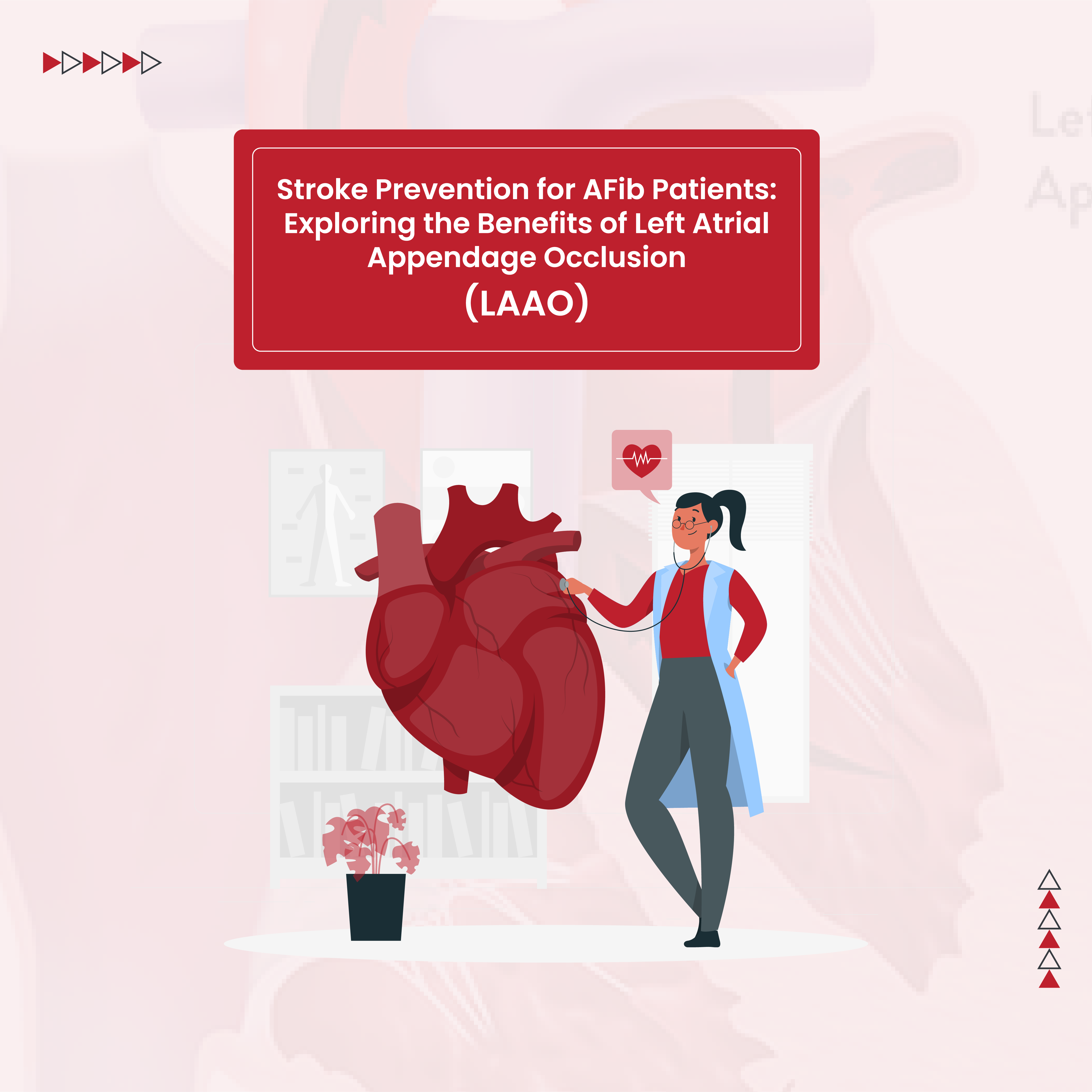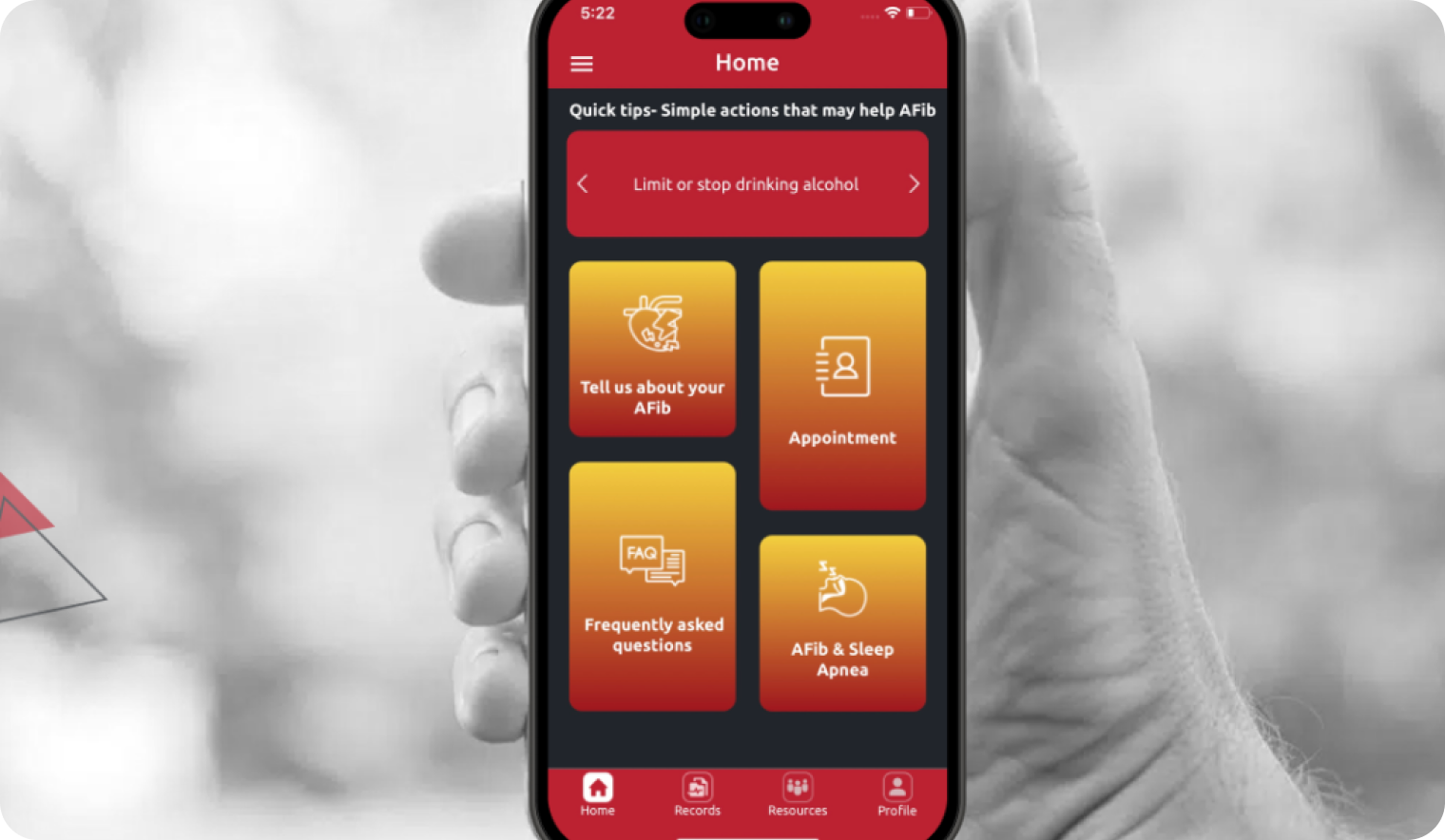The risk of experiencing an irregular heartbeat (arrhythmia) increases with age and most people over the age of 75 years experience irregular heartbeats at some point. Not all irregular heartbeats are bad or need treatment. Factors that determine if an arrhythmia is clinically significant include: duration, arrhythmia type, underlying risk factors or trigger(s), and associated symptoms. Risk factors for heart arrhythmia, like atrial fibrillation (AFib) and atrial flutter, may be modifiable (i.e. high blood pressure, obesity, sleep apnea, etc.) or non-modifiable (age, family history, and gender).
Atrial fibrillation (AFib) is the most common sustained arrhythmia and is our primary focus at FixAfib. AFib and atrial flutter are arrhythmias that originate in the heart’s upper chambers (atria). Arrhythmia can also originate in the heart’s lower chambers (ventricles). Sustained ventricular arrhythmias are less common than atrial arrhythmias but can cause serious problems and can be life-threatening if they are not corrected.
By treating risk factors for heart arrhythmia you can make arrhythmias less likely to occur, slow disease progression, or make arrhythmia treatments more effective.
What are the risk factors for heart arrhythmia?

Since atrial fibrillation is the most common sustained arrhythmia, atrial fibrillation risk factors are reviewed here in detail. AFib risk factors include certain characteristics, health conditions and lifestyle choices that increase the risk of developing AFib. Risk factors for atrial fibrillation include:
- Age: Atrial fibrillation is uncommon under the age of 40. The risk of atrial fibrillation goes up significantly over age 50 and continues to increase as you age. For example, the incidence of atrial fibrillation is less than 1% between the ages of 40-49 years but increases to almost 18% for people over the age of 70 years.
- Gender: Men have a higher risk of developing AFib.
-
- Family history: Atrial fibrillation can be genetic. If you have a family member with atrial fibrillation, you will have a 40% increased risk of developing AFib.
- High blood pressure: The most common modifiable risk factor for AFib is high blood pressure. Having high blood pressure increases the risk of atrial fibrillation by 40 to 50%. Controlling high blood pressure helps decrease this risk.
- Obesity: The risk of atrial fibrillation increases as weight increases with obesity conferring an almost 50% increased risk of atrial fibrillation. In 2021, a study on AFib risk factors was published in the British Medical Journal: Open Heart. It identified increasing BMI as a top risk factor for AFib amongst their study population of over 66,000 people over age 40.
- Sleep apnea: Sleep apnea makes you 4 times more likely to develop AFib. Sleep apnea is underdiagnosed which is important because untreated sleep apnea makes AFib treatment less effective.
- Overactive thyroid gland (hyperthyroidism): Excess thyroid hormone irritates the heart and can cause AFib.
- Heart disease: People with any kind of heart disease (valve disease, congestive heart failure, coronary artery disease, heart attack, heart surgery, or congenital heart disease) have an increased risk of developing AFib .
- Diabetes: Diabetes increases the risk of AFib, especially if you have had diabetes for a long time or if it is not well-controlled.
- Chronic health conditions: Chronic conditions – like chronic kidney disease and chronic lung disease (i.e. COPD) – increase the risk of atrial fibrillation.
- Drinking alcohol: Chronic heavy alcohol intake and binge drinking can trigger atrial fibrillation. Heavy alcohol intake is defined as:
- Women: Drinking more than 3 drinks on any day or 7 drinks per week
- Men: Drinking more than 4 drinks on any day or 14 drinks per week
- Smoking: People who currently smoke or use tobacco products have a higher risk of developing atrial fibrillation. A history of smoking also increases AFib risk, although the risk decreases the longer it has been since you quit.
Who is most at risk for heart arrhythmia?
People with heart disease are most at risk for developing an arrhythmia. Conditions that can damage the heart’s structure and cause heart disease include:
- High blood pressure
- Blockages in the arteries that supply blood to the heart muscle (coronary artery disease)
- Heart attack (myocardial infarction or MI)
- Heart valve disease
- Heart failure
- Sleep apnea
- Obesity
- Thyroid disease
- Lung disease
- Blood clots in the lungs (pulmonary embolism)
- Heart surgery
- Tobacco use
- Alcohol
- Heart defect that you are born with (congenital heart disease)
- Problems with the heart’s natural pacemaker (sick sinus syndrome)

Transient conditions or insults can also put additional strain on the heart and can cause arrhythmias, including:
- Serious illness or pneumonia
- Certain viral infections
- Stimulants like certain prescription medications, over-the-counter medications (i.e. cold medications), and street drugs
- Certain prescription drugs increase your risk of having an arrhythmia
- Electrolyte abnormalities
Atrial Arrhythmias: Atrial Fibrillation and Atrial Flutter
The normal heart rhythm is called normal sinus rhythm. Normal sinus rhythm occurs when the sinus node, which is the heart’s internal pacemaker, emits regular electrical impulses 60-100 times per minute. These electrical signals travel throughout the atria before moving on to the ventricles. This results in a coordinated, regular heart rhythm. Atrial fibrillation and atrial flutter occur when electrical signals from other areas of the atria override the sinus node.
The exact mechanisms of AFib are not fully understood but it appears that increased levels of stress hormones and inflammation increase oxidative stress which causes changes within the heart at the cellular level. These changes result in fibrosis (stiffening) and heart chamber enlargement which changes atrial function and creates an environment that is conducive to the initiation and maintenance of atrial fibrillation. The risk factors and conditions described above can all contribute to increased levels of inflammation and stress hormones which strain the heart.
In addition to the indirect effects of systemic inflammation and stress hormones, some conditions like heart disease, sleep apnea, and high blood pressure directly impact the heart’s structure and function to trigger AFib.
Ventricular arrhythmias. The left lower heart chamber (ventricle) is the workhorse of the heart and when the left ventricle contracts it ejects blood from the heart to the rest of the body. Normally, the heartbeat starts in the sinus node, which is located in the upper right heart chamber (atria) and is the heart’s internal pacemaker. The cardiac cycle (heart beat) starts when the sinus node generates an electrical impulse that spreads first throughout the atria and then the ventricles. This organized depolarization – atria, then ventricles – causes the heart muscle to contract to pump blood through and out of the heart and is what creates the typical regular heart rhythm.
In the case of a ventricular arrhythmia, the electrical impulse starts from somewhere within the ventricles which causes the heart contraction to start at the bottom of the heart and spreads upward. Ventricular beats tend to start earlier in the cardiac cycle when the heart should be between beats and thus filling with blood in preparation for the next contraction. Single early ventricular beats are very common and their frequency increases with age. An occasional, isolated premature ventricular contraction (PVC) is not dangerous but can cause symptoms which can include:
- Palpitations
- Chest pain
- Shortness of breath
- Lightheadedness
Heart palpitations have been described as feeling like a skipped beat, a flip-flop sensation in the chest, heart thumping/pounding, or a heart flutter. For some people, these early beats are very symptomatic and bothersome and in these cases, medications can be given to suppress the early beats.
If you have frequent symptomatic PVCs, your provider may want to order cardiac diagnostic tests to look for underlying causes that require treatment like heart failure, uncontrolled high blood pressure, sleep apnea, and coronary heart disease. Blood work will be checked for abnormalities that can contribute to frequent PVCs. Underlying health conditions that can trigger PVCs should be treated.
While isolated, occasional PVCs in the absence of heart disease are generally not concerning, a sustained ventricular arrhythmia can be dangerous and warrants further investigation to identify and treat underlying causes. A sustained ventricular arrhythmia can be life-threatening and is a medical emergency. Sustained ventricular arrhythmias include:
- Ventricular tachycardia (V-Tach or VT). Ventricular tachycardia occurs when consecutive ventricular beats cause the heart to beat too fast (i.e. greater than 100 beats per minute). These fast ventricular beats can compromise the heart’s ability to adequately fill with blood before the next contraction which affects blood flow to the rest of your body. V-Tach can be non-sustained (last less than 30 seconds) or sustained (lasts greater than 30 seconds). Nonsustained VT terminates on its own and sometimes people with an episode of nonsustained VT are not even aware that they had it. Sustained VT can cause significant problems, including:
- Passing out or fainting
- Loss of consciousness
- Sudden death (cardiac arrest)
- Ventricular fibrillation (V-Fib or VF). V-Fib is a potentially lethal arrhythmia that can cause sudden cardiac death. Ventricular fibrillation can occur on its own or it can result from sustained ventricular tachycardia. During ventricular fibrillation, the ventricles quiver and are unable to pump blood out to the body. Sudden loss of consciousness is the most common symptom of VF. Ventricular fibrillation requires cardiopulmonary resuscitation and defibrillation (i.e. heart is shocked using electricity).
- Torsades de pointes. A ventricular arrhythmia that can result from long QT syndrome, which can be congenital (i.e. a condition someone is born with), acquired (i.e. secondary to illness or electrolyte abnormalities) or caused by certain medications. Torsades de pointes is a dangerous arrhythmia that can lead to ventricular fibrillation.
When should you see your doctor?
If you have heart palpitations or symptoms that are concerning for heart arrhythmia, you should contact your provider for further evaluation. Accurate diagnosis and effective treatment is important to help minimize the impact of a heart arrhythmia on your health and quality of life.








